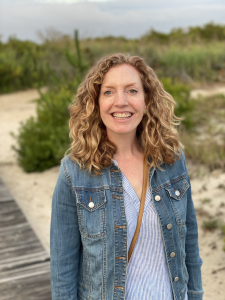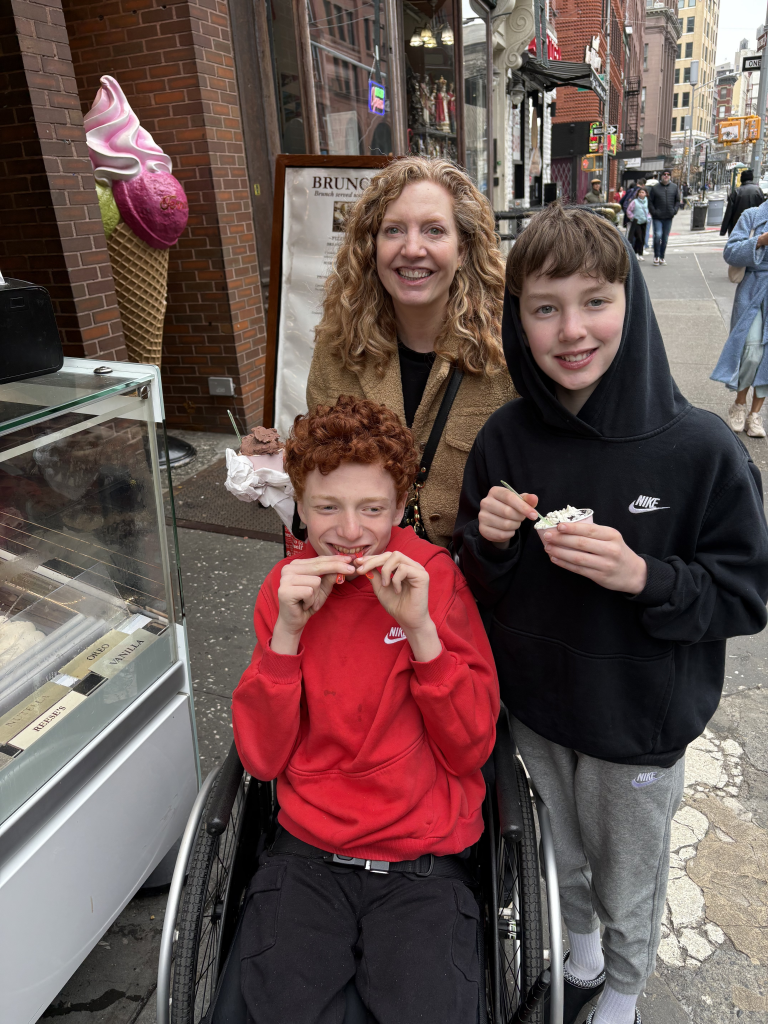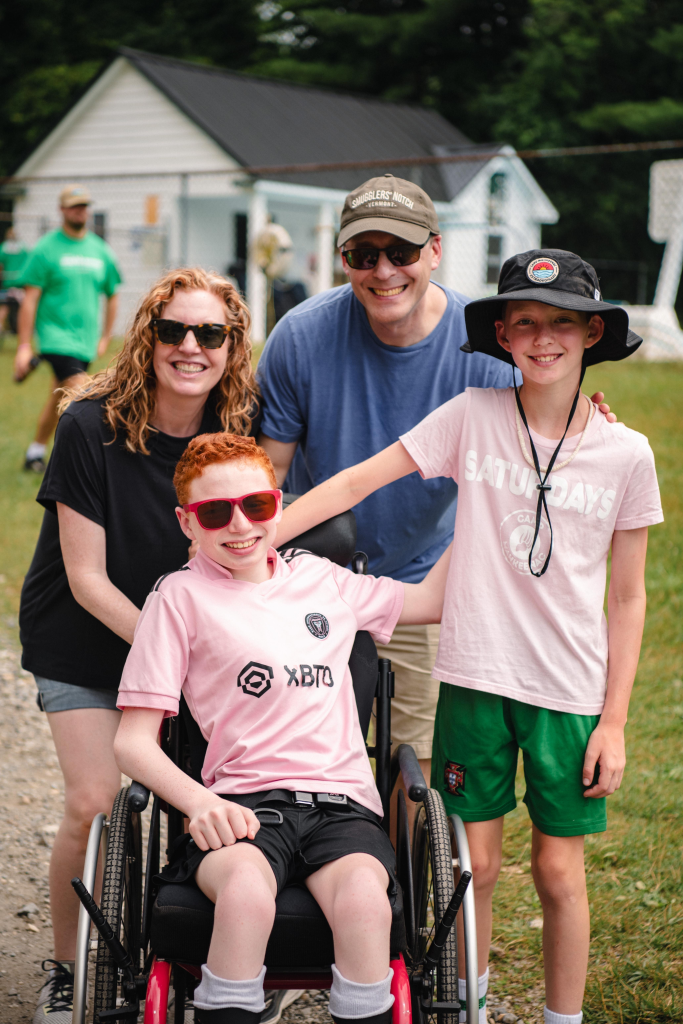Hello and Happy June!
We hope you had a wonderful Father’s Day! We have a lot to share in this edition of our newsletter.
🌞 Our Summer of Support Starts Now!
After an incredible spring with inclusive parades, Mother’s Day events, more podcast episodes recorded, our support group gatherings, and our ongoing community building, 1in6 Support is ready for our next steps. During this 10-day summer fundraising campaign, help us raise $10,000 to build our capacity to serve even more families of children with disabilities.
🔗 Give now: https://1in6support.org/donate/
📣 Join us for the next 10 days as we share stories, successes, and hopes for the future. Please don’t forget to share our posts on Instagram and Facebook, as well as LinkedIn! Just as we serve our community, we need our community to support us now.
Do you know a local or national business that would like to be part of our fundraising campaigns? If so, please contact us at info@1in6support.org.
Grant from Midland Area Community Foundation
We also wanted to share the exciting news that 1in6 Support has been selected to receive a grant from the Midland Area Community Foundation’s Community Investment fund. The Midland Area Community Foundation exists to cultivate the power of giving within our Midland community, support long-term transformation, and help ensure all residents thrive. Funding received through this grant will support 1in6 Support’s programmatic community work, including hosting free, accessible support groups and events for families of children with disabilities.
Also in This Edition…
If that wasn’t exciting enough for you… in this June edition we also have superstar Parent of the Month, Jessica Bondi, an article by our favorite swim teacher, Jennifer May, discussing whether or not swim lessons should be private or group, and a simple recipe for Middle Eastern Inspired Stuffed Sweet Potatoes!
Enjoy and see you in July!
xoxo Alma and Iris
P.S.
Please remember to reach out with newsletter ideas and Parent of the Month nominations.
P.P.S. (Oh, and don’t forget to listen to one of our latest podcast episodes on our website: www.1in6support.org)
Private vs. Group Swim Lessons for Children with Special Needs/Disabilities: How to Choose
Parents of neurodivergent children or children with disabilities are always seeking learning environments that support their child’s development while fostering social connection and minimizing isolation. Striking this balance can be challenging—and it often shifts as children grow.
When it comes to swim lessons, a common question asked is: Are private or group lessons better? The answer depends on a child’s unique personality, sensory needs, learning style, and family’s goals. Families must also consider the significant cost difference between the two.
Private Swim Lessons
Private lessons offer one-on-one instruction, ideal for children who are easily distracted, have limited verbal communication, or need a slower, more customized pace. Instructors can adapt sessions to suit your child’s strengths and challenges, whether that means breaking skills down more gradually, reducing sensory input, or focusing on goals like water comfort and safety.
For children with autism, sensory processing difficulties, or physical disabilities, the calm and consistency of private lessons can help build trust and steady progress.
Group Swim Lessons
Group lessons provide opportunities for social interaction and peer motivation. Some children learn best by watching others and may benefit from practicing turn-taking, following group instructions, and developing social awareness. If your child enjoys being around peers and can follow along with support, a small adaptive group class might be a great fit. These settings can also build a sense of community and reduce feelings of isolation.
What to Consider
Think about your child’s sensory profile, attention span, and ability to transition between activities. Are they working on social goals? Do they benefit from peer modeling? If you are unsure, consult with the swim program director to get their perspective.
A Blended Approach
There’s no one-size-fits-all answer. Often, a combination of lesson types works best. We frequently recommend private lessons between ages 4–6 to build self-rescue skills early—especially important for children with autism, who face a higher risk of drowning. Later on, parents might try semi-private lessons (two students, one teacher), and then transition to small group classes with three to four children, as your child becomes more comfortable.
With the right instructor and environment, both private and group lessons can foster safety, confidence, and joy in the water. Follow your child’s lead, start where they feel secure, and adjust as their needs evolve.
Top Five Tips to Prepare for a Swim Lesson for a Child with a Disability
For either type of lesson, employ these tips to prepare for a swim lesson for a child with a disability:
- Schedule a phone call or meeting with the instructor Share your child’s history and learning style with the instructor. This information helps the instructor make their lesson plan more effective.
- Visit the pool in advance with the swimmer Visiting in advance can reduce anxiety for both student and parent.
- Pack swim bag in advance. Read our blog post about Sensory Friendly Swim Gear! Essentials: two towels, hair and body soaps, comb/brush Swim Supplies: soft swim cap or hair ties, goggles (if over 5 years), comfort item that can get wet, swim diapers if not potty trained
- Establish a routine While instructors will work on a routine in the water, guardians should establish routines for before and after class.
- Patience Recognize that progress may be gradual. Skill development for neurotypical and non-disabled people is gradual too, taking into the teen years to develop a refined and confident stroke. Remember to play the long game and celebrate each small step towards water competency.
By Jennifer May of Life Cycle Swimming
Parent of the Month: Jessica Bondi

Describe your daily schedule in five words? Routine, hectic, ordinary, extraordinary, repeat!
What’s your favorite family activity and why? Anything involving food. Going out to restaurants, farmers markets, a special meal at home. Food has always been important to me and my kids have gotten into it in the past couple years. It’s something we can all enjoy regardless of ability. I asked my kids and they said restaurants on vacation:)
What’s your idea of a perfect day? Sleep in, get in a workout at the gym or a long walk with my dog. Read as much as I want! Go out to a great dinner with my husband or friends.
What’s your favorite song? Too hard to choose! I usually listen to podcasts.
What is your guilty pleasure? Binge watching TV shows late at night. Medical dramas are a favorite.
What is your most useful skill? Cooking.
What is the most challenging part of having a child(ren) with a Disability? Balancing the needs of both of my children. I suspect this is a challenge for many parents, but with disability in the mix it’s amplified. It also can be very isolating.
What would you tell your former self when your child(ren) was diagnosed? Take a breath. You’re doing a great job. You can do this. Spend a little more time hanging out with your babies and a little less time going to appointments.
In one sentence, what’s your best parental advice? Get some support for yourself on this journey (friends, family, a therapist, whatever form support comes in for you).
What is the best part about having a child(ren) with a disability? All of the wonderful people we’ve met along the way whom we would not have known otherwise.


Recipe of the Month: Middle Eastern Inspired Stuffed Sweet Potato

Middle Eastern Inspired Stuffed Sweet Potato
Ingredients:
- 1 large Sweet Potato
- 2/3 cup uncooked quinoa
- 2 ounces paneer or halloumi cheese
- 4 Tbs labne or plain, full fat Greek yogurt
- 2 tsp zahatar
- 1/2 tsp of olive oil plus drizzle olive oil
- Drizzle of tahini
- Sprinkle of smoked paprika
- Salt to taste
Steps:
- Preheat oven to 425 degrees.
- While oven is pre-heating, start cooking the quinoa according to instructions.
- Slice the cheese into 1 inch x 1/4 inch pieces.
- Place potato in oven and bake until tender, about 1/2 hour or until a fork can easily pierce it.
- While the potato is baking, fry up the cheese with a 1/2 tsp olive oil until browned on both sides and set aside.
- Remove the potato from the oven, slice open and mash both sides within the skin.
- Top each half with 1/3 cup quinoa, then cheese, then labne.
- Top with a drizzle of tahini, olive oil, salt, zahatar and smoked paprika.
And don’t forget to donate to our Summer Support Campaign! 🔗 Give now: https://1in6support.org/donate/
